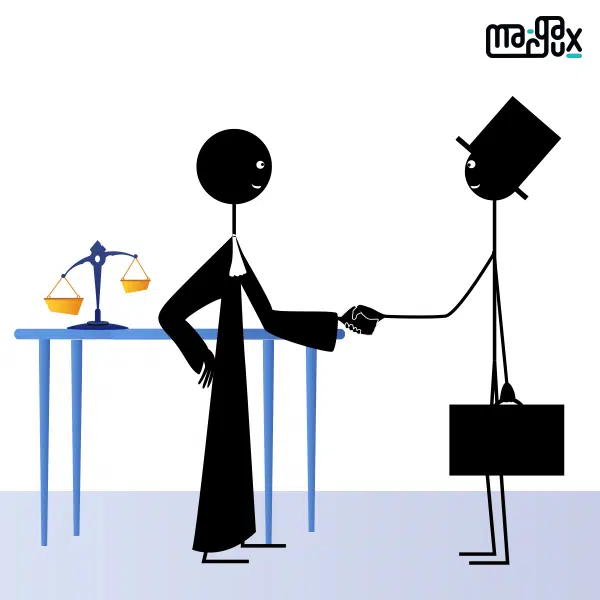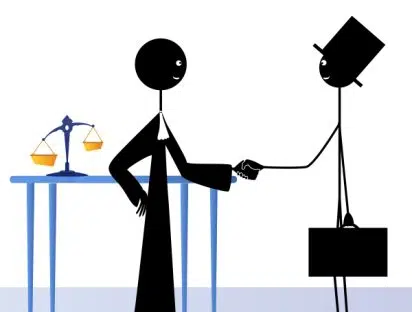The French Deferred Prosecution Agreement (Convention judiciaire d’intérêt public, below CJIP) is a genuine agreement, admittedly “proposed” by the public prosecutor to a legal person accused of offences such as corruption and trading in influence, but which the legal person is free to accept or refuse (1). It has been observed, however, that this arrangement is “unbalanced,” especially for three reasons: first, the position of the legal person as a defendant; second, the initiative to use the CJIP, which rests exclusively with the judicial authority; and last, the validation control, which is exercised by a judge at the end of the procedure. In this article, we ask whether this supposed imbalance can be clarified by the concept of joint commitment, which was proposed by the philosopher Margaret Gilbert.

Critics of the CJIP suggest that it may be an opportunistic choice for legal persons. As we saw in our previous article, one of its possible side effects could be to encourage a legal person to knowingly take a criminal risk by relying on the possibility of entering into a CJIP in the event of legal proceedings.
Such an argument feeds the impression that the CJIP is an unbalanced agreement in the sense of a second-best agreement, a non-optimal agreement resulting from a second-best choice, the choice of “something that you have to accept even though you would have preferred something else” (2). The pattern can be summarised as follows:
In a given case, legal entity X prefers the option that leads them to take a criminal risk, because if the violation of the law is not discovered, X will maximise their gains, and if discovered, X can be offered, with some assurance, a public interest judicial agreement that will allow them to limit their financial, economic and reputational losses.
This may seem like a caricature, but it reflects, according to critics of the CJIP, the “wrong signal” that this mechanism sends to companies (3). It emerged very quickly after the introduction in the United States of the Deferred Prosecution Agreements (from which the CJIP was inspired) a little over twenty years ago (4).
A New York Times article in 2008 observed that “some lawyers suggest that companies may be willing to take more risks because they know that, if they are caught, the chances of getting a deferred prosecution are good” (5). And, quoting Vikramaditya Khanna, a professor of law at the University of Michigan, the author of the article added that “’some companies may bear the risk’ of legally questionable business practices if they believe they can cut a deal to defer their prosecution indefinitely.”
The possibility of such risk-taking casts doubt on the genuineness of the CJIP agreement, the idea of “genuineness” referring here to a substantive definition of an agreement as “a harmony of opinion, action, or character” (6).
This sense of genuineness is present in the concept of joint commitment. Proposed by Margaret Gilbert, it refers to a mutual commitment that entails obligations for the persons involved. They are in a situation of interdependence, joined “as a body” as if they were a single person, a collective subject – what Gilbert calls a “plural subject” (7). Indeed, according to Gilbert, “the individual commitments in question cannot exist on their own, apart from all other such individual commitments. They are not independent or autonomous commitments: this follows from their being severally dependent on a joint commitment” (8).
None of the parties involved can unilaterally break their individual commitment (and, as a consequence, fail to fulfil the obligations arising from the joint commitment): it can only be broken by a decision of all the participants – “the parties to a joint commitment must rescind it together.” Gilbert compares the joint commitment to a rope held taut by two persons: “Neither can hold a taut string by this method unless the other does: neither is, or can be individually committed through the joint commitment unless the other is” (9). These two persons form a plural subject, and their agreement brings them together to such a degree that it is “outside their personal control” (10).
Furthermore, each person knows that they are part of a joint commitment and they know that the others know it too (and they know that they know it and the others know it, etc.). Answering the question of how a joint commitment is formed, Gilbert uses the example of Joe asking Lisa: “Shall we dance?”, with Lisa nodding “Yes!” (11). In this interaction, Joe and Lisa have made it clear that they are willing to dance together. This mutual commitment is of common knowledge: “Joe and Lisa understand that their joint commitment is in place when and only when it is common knowledge between them that the relevant expressions of readiness have been made. In this way people become jointly committed to dancing together” – or, in this other formulation: “Joe and Lisa are jointly committed to accepting as a body the goal of partnering each other in a dance” (12).
Joe and Lisa have made an agreement, which, incidentally, could have been even less explicit. But for Gilbert, agreements, whether explicit or implicit, “involve an underlying joint commitment” (13). Indeed, she defines an agreement as “a joint commitment to uphold a certain decision as a body” (14). An agreement is “a joint decision,” because “any joint decision […] involves both simultaneous and interdependent obligations, key features of an agreement” (15).
Coerced agreements, in the sense that they have been concluded under coercive circumstances, can also be considered as joint commitments. If, for example, Lisa had been coerced into dancing with Joe because of threats he had allegedly made against her, the fact that she had been willing to dance with him would have been sufficient to give rise to a joint commitment.
A CJIP would be a joint commitment in the Gilbert sense. True, the spontaneous agreement between Joe and Lisa (or between Mike and Jane who jointly decide to take care of Fido the dog, one to walk him and the other to feed him, one of Margaret Gilbert’s other examples), seem a far cry from the kind of formal, institutional agreement that constitutes a CJIP. But the fact that CJIP is defined in law and implemented by a judicial institution does not preclude it from having the characteristics of a joint commitment.
As for the supposed imbalance of the CJIP – let us recall this comment by Laurence Fabre, head of the private sector programme at Transparency International France, which we quoted in our previous article: “The CJIP is in the public interest: in fact, it does not place the parties to the transaction on an equal footing” (16) – it does not call into question the fact that it can constitute a joint commitment, nor does it call into question the comment by legal scholar Martina Galli, who observed that the law of 9 December 2016, at the origin of the CJIP, “expressly targets obligations ‘imposed’ on the offender, not merely proposed,” and that the power of the company is “to accept or reject content that is beyond its control” (17). But such a limitation of the options available to the legal person has no effect on the assumption of joint commitment. Apart from cases of tragic moral dilemmas, such as the one portrayed in William Styron’s Sophie’s Choice (18), an agreement is not “unbalanced” by the existence of a limited number of options, because in the context of a choice the number of options available is quite often indefinite.
Another possible explanation for the alleged imbalance of the CJIP is that the content of the commitment of the legal person concerned is more substantial than that of the judicial authority. Indeed, according to French law, it must “submit, for a maximum period of three years and under the supervision of the French Anti-Corruption Agency (Agence française anticorruption), to a programme of compliance” (19). But the disproportionate efforts that have to be made under the CJIP – which is another interpretation of the “imbalance” of the agreement – has no bearing on the assumption of joint commitment. Mike and Jane have jointly decided to look after Fido, but Mike’s time spent walking the dog is arguably greater than Jane’s time spent feeding the dog, without affecting their joint commitment.
While the concept of joint commitment, which is a form of conceptualisation of agreements in general, may shed light on the CJIP, it does not capture the imbalance that would characterise the CJIP. In our next article, we will examine another possibility to account for this, which is linked to the distinction between assent and consent.
Références
(1) See our previous article: “What is the meaning of ‘agreement’ in the French Deferred Prosecution Agreement (1)?” Blog Philosophy & Business Ethics, 30 November 2022.
(2) Collins Dictionary.
(3) I quote Eric Lichtblau’s expression in note 5 below.
(4) See “What are Non-Prosecution Agreements (NPAs) and Deferred Prosecution Agreements (DPAs)?” Dow Jones, Risk & Compliance Glossary.
(5) E. Lichtblau, “In justice shift, corporate deals replace trials,” New York Times, 8 April 2008.
(6) Merriam-Webster Dictionary.
(7) See M. Gilbert, On social facts, Routledge, 1989.
(8) M. Gilbert, “Reconsidering the ‘actual contract’ theory of political obligation,” Ethics, 109(2), 1999, pp. 236-260.
(9) M. Gilbert, “Agreements, coercion, and obligation,” Ethics, 103(4), 1993, pp. 679-706.
(10) Ibid.
(11) M. Gilbert, “Reconsidering…,” op. cit.
(12) Ibid. “In order for two or more people to become parties to a joint commitment each must express to the other his or her willingness to do so, in conditions of common knowledge” (M. Gilbert, “Agreements…,” op. cit.).
(13) M. Gilbert, “Reconsidering…,” op. cit.
(14) Ibid.
(15) M. Gilbert, “Agreements…,” op. cit.
(16) The full passage is as follows: “The CJIP is in the public interest: in fact, it does not place the parties to the transaction on an equal footing. In fact, the Public Prosecutor’s Office remains in control, in the name of the principle of discretionary prosecution, of the choice to resort to the CJIP, considering that it is their responsibility, in the course of each case, to consider that it could prove to be in the public interest” (L. Fabre, “Préservons l’équilibre de la convention judiciaire d’intérêt public,” Le Monde du Droit, 5 November 2021).
(17) M. Galli, “Une justice pénale propre aux personnes morales. Réflexions sur la convention judiciaire d’intérêt public,” Revue de science criminelle et de droit pénal comparé, 2(2), 2018, pp. 359-385.
(18) In the novel, which is set during World War II, the title character must choose between the lives of her two children while imprisoned in the Nazi concentration camp Auschwitz.
(19) The full sentence reads as follows: the CJIP requires the legal person to “submit, for a maximum period of three years and under the supervision of the French Anti-Corruption Agency (Agence française anticorruption), to a programme of compliance designed to ensure the existence and implementation within the legal person of the measures and procedures listed in II of Article 131-39-2 of the French Criminal Code” (Loi n° 2016-1691 du 9 décembre 2016 relative à la transparence, à la lutte contre la corruption et à la modernisation de la vie économique, Article 22).



